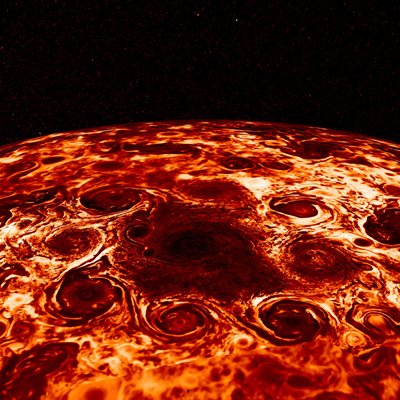
This image captured by the NASA Juno probe shows a group of cyclones formed simultaneously around the north pole of Jupiter.
In this image the formations are shown in a composite image from infrared observations taken by the Jovian Infrared Auroral Mapper (Jiram) instrument aboard the Juno probe. The colors represent variations in temperature, in radiated heat: the yellow zones (layers of thinner clouds) are at about -13 °, and the dark red (layers of thicker clouds) are at 83 °.
The Juno mission has revealed new data and clues about the internal structure of the gas giant, including the geometric formations of 4000 km in diameter at the north pole and 5600 km at the south pole that remain more or less stable over time.
It is now known, for example, that the meteorological layer of Jupiter (where meteorological events occur) is more massive and extends over many more kilometers of depth than expected: the Jovian climatic layer deepens 3,000 kilometers and represents about one percent of the mass of Jupiter, the equivalent of three landmasses. By comparison, they explain from NASA, the Earth's atmosphere is less than a millionth of the Earth's total mass, while the Earth's climate layer (the troposphere) is about 17 km thick at the equator and 7 km in the poles.
This post has received a 0.04 % upvote from @speedvoter thanks to: @mememania.